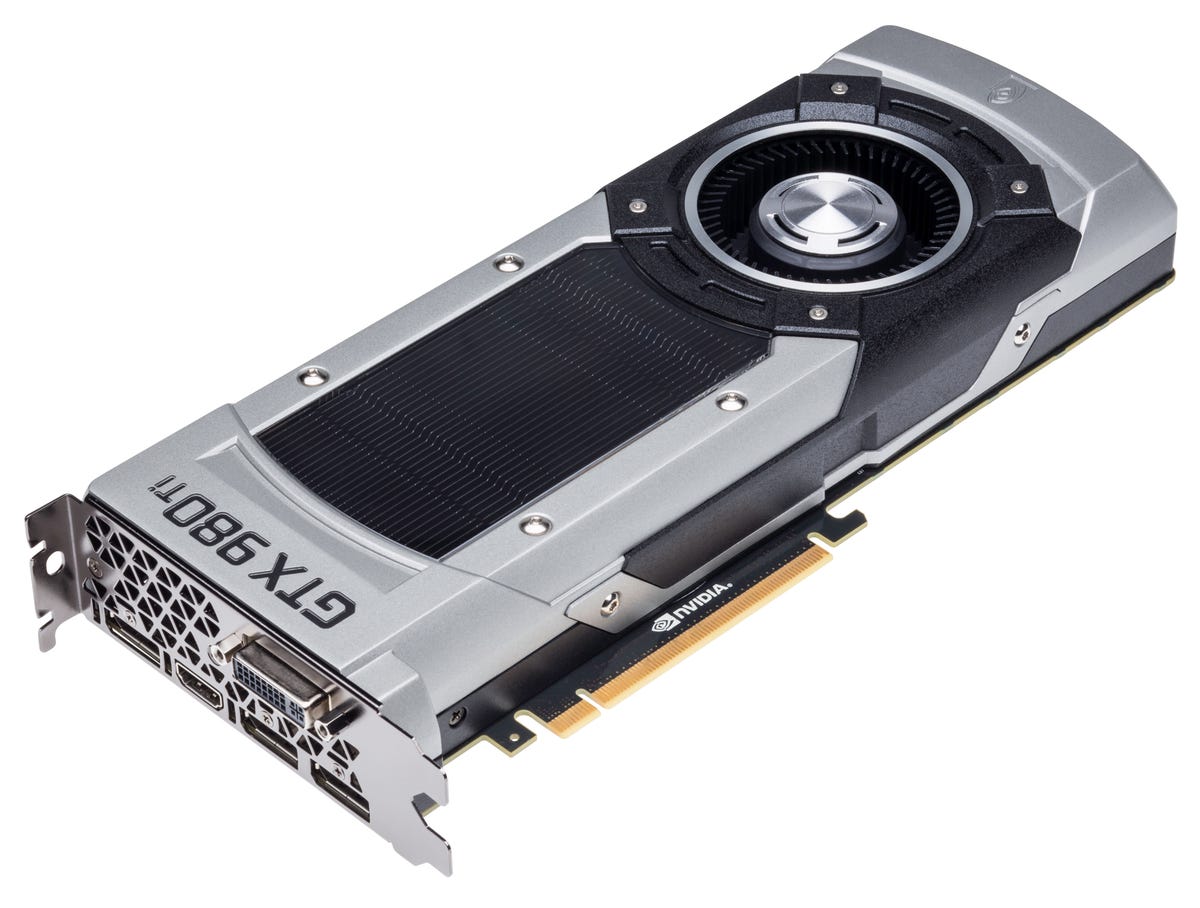
Nvidia
TAIPEI — Nvidia has announced a souped-up version of its previous flagship graphics card and given it a titanium sheen, pre-empting the formal opening of the Computex 2015 trade show.
Dubbed the GeForce GTX 980 Ti, Nvidia says the GTX 980 Ti will deliver better support for 4K PC gaming, allowing new games such as The Witcher 3 to run at 4K resolution at a reasonable 45 frames per second, compared to 19fps on the older GTX 680. For the latest car racing simulator, Project Cars, Nvidia expects to deliver 47fps on the GTX 980 Ti compared with 18fps on the GTX 680.
The reference version of the graphics card will retail for $649 (only US pricing was announced, converting to roughly £425 and AU$825) and the new card comes bundled with the upcoming Batman: Arkham Knight for PC. The introduction of the GTX 980 Ti has also dropped the price of the former flagship model, the GTX 980, down to $499.
The new graphics card is powered by the chip maker’s Maxwell microarchitecture, which supports the latest DirectX 12 effects and packs in more video RAM as well. It’s a significant jump to 6GB of memory, compared with the previous card’s 4GB.
The second-generation Maxwell chips allow for high-resolution performance and lighting with better frame rates, but they’re also a lot more power efficient — the GTX 980 has half the power consumption of Nvidia’s GTX 750, which was powered by the first-generation Maxwell.
For the technically inclined, it’s interesting that the GTX 980 Ti is clocked slower than previous cards at 1,000MHz. It makes up for it with a better pixel and texture fill rate, while also packing in more transistors — 8,000 compared to 5,200 of the GTX 980. When you look at the specs in detail, the GTX 980 Ti is basically a cheaper version of Nvidia’s ultimate piece of hardware, the $999 Titan X, having only 6GB of video RAM instead of the Titan X’s 12GB.
G-Sync comes to notebooks
Besides the new GTX 980 Ti, Nvidia also announced that new gaming notebooks powered by its graphics cards will have G-Sync. G-Sync is Nvidia’s own solution for the problem of screen tearing, which is a horizontal distortion that happens when the display’s refresh rate is unable to keep up with the output from the graphic card.
Most users turn on V-Sync to fix the problem, but it comes at the cost of performance. Nvidia’s solution is to synchronize both the monitor’s refresh rate and the render rate of the GPU, so images don’t go out of sync. New laptops from Asus, Clevo, Gigabyte and MSI will pack Nvidia-approved 75Hz displays.
Nvidia currently controls around 70 percent of the GPU market, with its main rival, Advanced Micro Devices, powering the console hardware for the Xbox One, Sony PlayStation 4 and Nintendo’s Wii U, and the remaining 30 percent of the PC market. This is in stark contrast to 2010, where both players were neck-and-neck.




